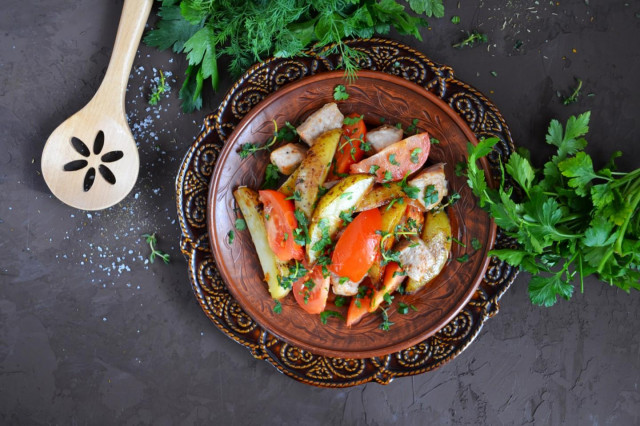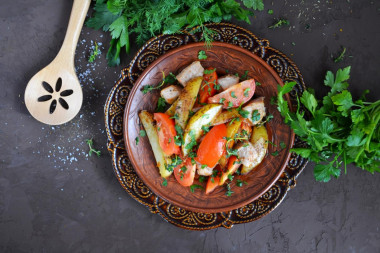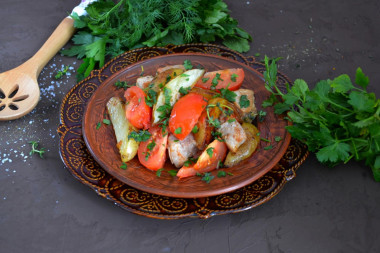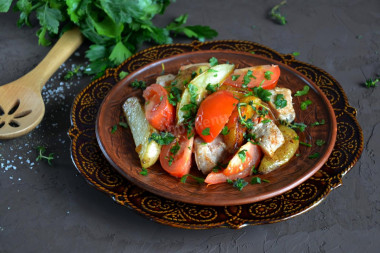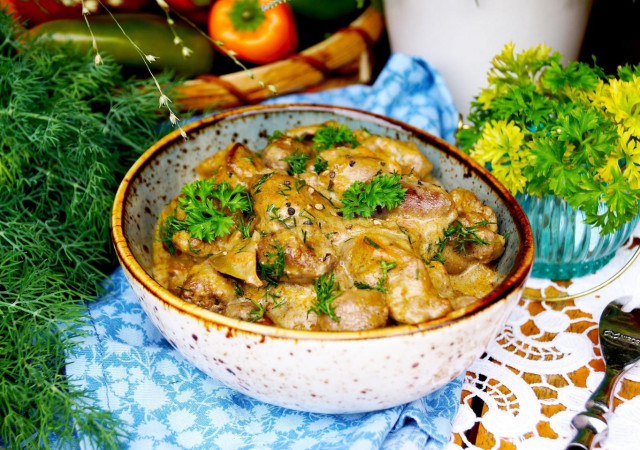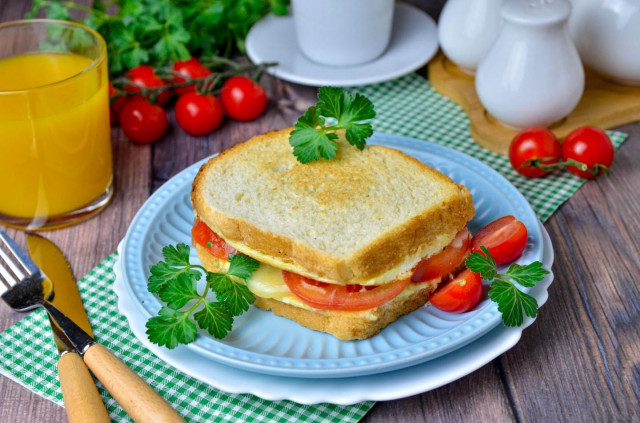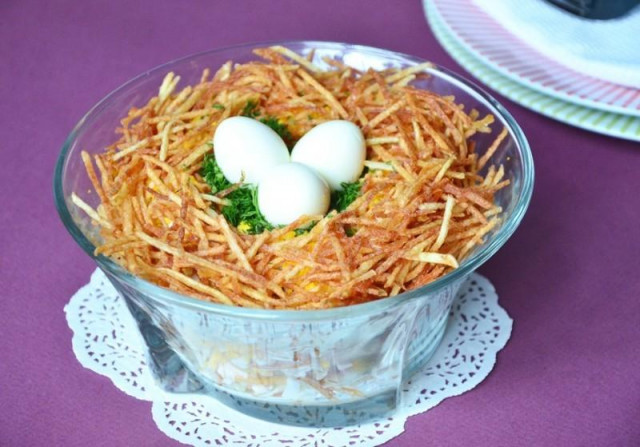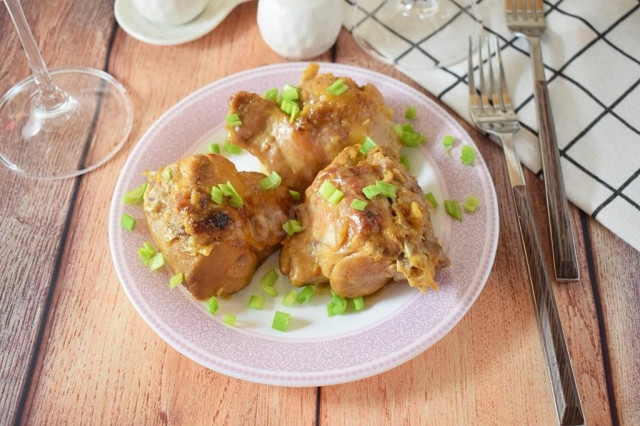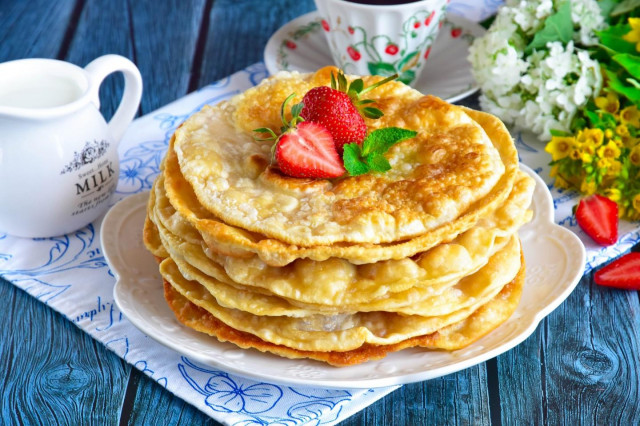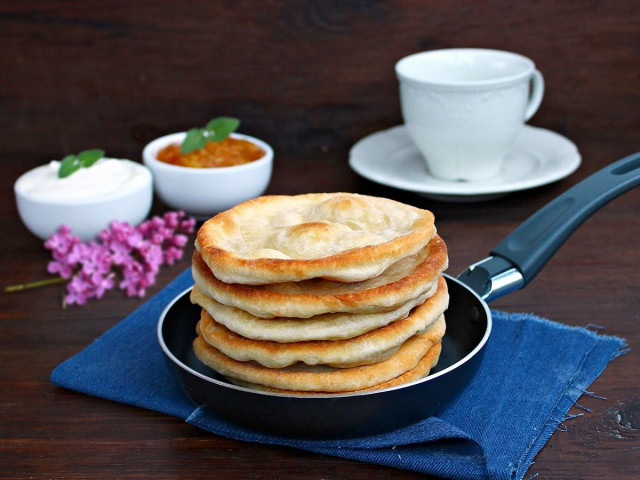Composition / ingredients
Step-by-step cooking
Step 1:
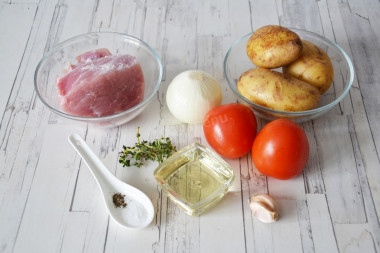
How to make ojakhuri in Georgian? Prepare the ingredients: meat, potatoes, tomatoes, onion, garlic, fresh thyme, vegetable oil, salt, pepper. Ojahuri can be prepared from any kind of meat, be it beef, pork or lamb. Meat can be taken as very fatty (for example, the neck part), and not so much (ham, pulp). It all depends on personal tastes and preferences. I use a pork ham without a bone.
Step 2:
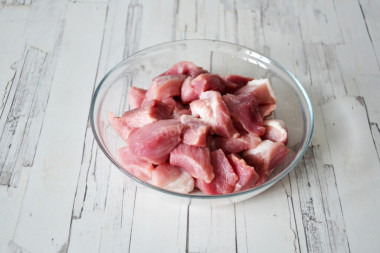
Wash the meat, dry it and cut it into medium pieces. It is not necessary to cut too large, otherwise the cooking time will increase, and during this time the onion may burn.
Step 3:
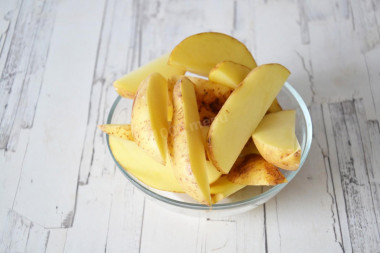
Wash the potatoes thoroughly, rub with a stiff sponge and cut into slices. For ojarkhuri, it is better to take young potatoes with a thin skin. Stale potatoes are also suitable, but it is tastier with young potatoes.
Step 4:
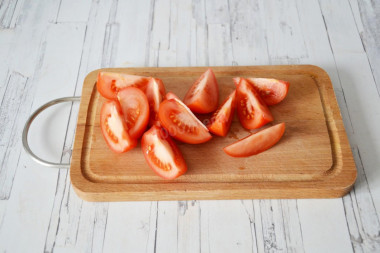
Cut tomatoes into slices, removing the stalk. Tomatoes should be chosen dense, but not green. Because we need them to keep their shape, and not spread all over the pan in a shapeless mass.
Step 5:
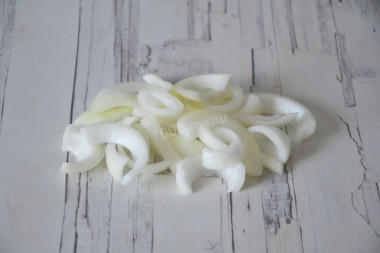
Cut the onion into half rings.
Step 6:
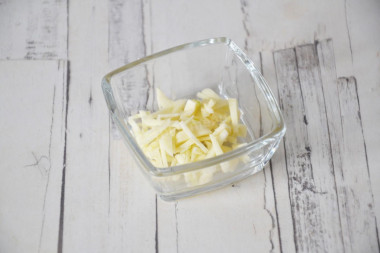
Peel and finely chop the garlic.
Step 7:
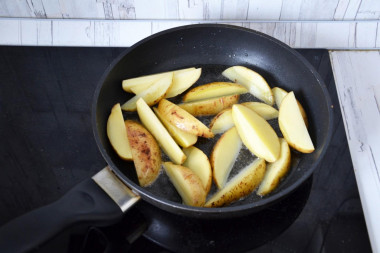
Heat the vegetable oil in a frying pan. Put the potato slices and fry on high heat for about 5 minutes, stirring. New potatoes are cooked quickly enough, so you don't need to fry them longer.
Step 8:
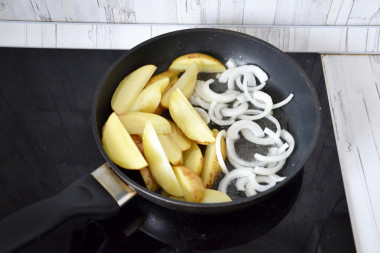
Push the potatoes aside. Add the onion. Fry for about 2 minutes until the onion is transparent on a slightly higher than average heat. Potatoes and onions do not need to be mixed. Move the finished onion to the potatoes.
Step 9:
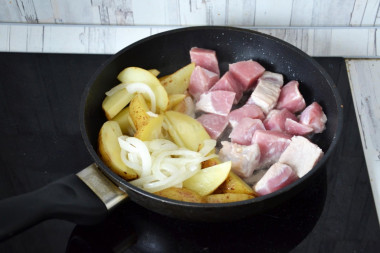
Put the meat on the vacant place and fry until golden brown for about 7 minutes. Stir the meat periodically so that it is evenly fried on all sides.
Step 10:
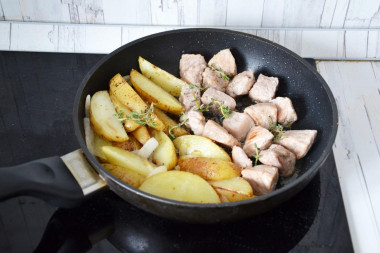
When the meat is fried, reduce the heat to low. Season the contents of the pan with salt and pepper, add thyme and mix.
Step 11:
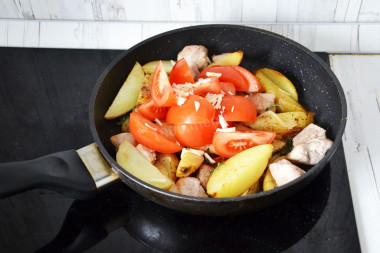
Add sliced tomatoes and chopped garlic.
Step 12:
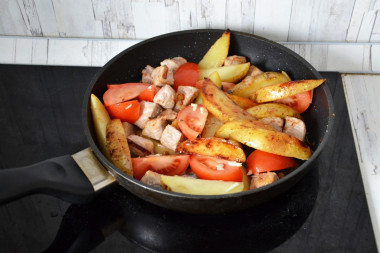
Stir the contents of the pan again. Warm everything up together for 1 minute. Tomatoes just need to be warmed up, but not fried.
Step 13:
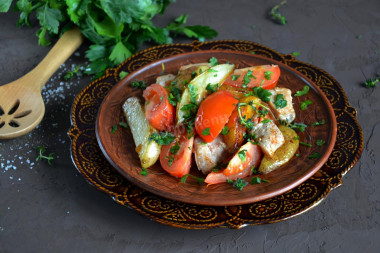
Arrange the ojahuri on plates, sprinkle with chopped parsley or coriander and serve. Bon appetit!
For cooking, it is better to use a large diameter frying pan so that vegetables and meat are placed on it in one layer.
Important! An incorrectly selected frying pan can ruin even the best recipe. All the details on how to choose the perfect frying pan for different dishes read here .
Any oils are useful only until a certain temperature is reached - the point of smoking, at which the oil begins to burn and toxic substances, including carcinogens, are formed in it. How to determine the roasting temperature and choose the best oil for frying, and which is better not to use at all, read here .
Since the degree of salinity, sweetness, bitterness, sharpness, acid, burning is individual for everyone, always add spices, spices and seasonings, focusing on your taste! If you put some of the seasonings for the first time, then keep in mind that there are spices that it is especially important not to shift (for example, chili pepper).
Caloric content of the products possible in the composition of the dish
- Onion - 41 kcal/100g
- Ripe potatoes - 80 kcal/100g
- Baked potatoes - 70 kcal/100g
- Mashed potatoes - 380 kcal/100g
- Boiled potatoes - 82 kcal/100g
- Potatoes in uniform - 74 kcal/100g
- Fried potatoes - 192 kcal/100g
- Tomatoes - 23 kcal/100g
- Pork fat - 333 kcal/100g
- Pork meat - 357 kcal/100g
- Pork - low-fat roast - 184 kcal/100g
- Pork chop on a bone - 537 kcal/100g
- Pork - schnitzel - 352 kcal/100g
- Pork Shoulder - 593 kcal/100g
- Boar's leg - 113 kcal/100g
- Pork - 259 kcal/100g
- Garlic - 143 kcal/100g
- Ground black pepper - 255 kcal/100g
- Thyme - 101 kcal/100g
- Dried thyme - 276 kcal/100g
- Thyme - 276 kcal/100g
- Vegetable oil - 873 kcal/100g
- Salt - 0 kcal/100g

